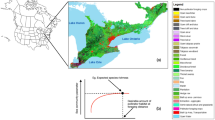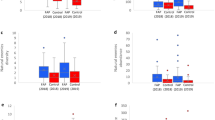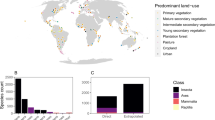Abstract
Pollinators underpin sustainable livelihoods that link ecosystems, spiritual and cultural values, and customary governance systems with indigenous peoples and local communities (IPLCs) across the world. Biocultural diversity is a shorthand term for this great variety of people–nature interlinkages that have developed over time in specific ecosystems. Biocultural approaches to conservation explicitly build on the conservation practices inherent in sustaining these livelihoods. We used the Conceptual Framework of the Intergovernmental Science-Policy Platform on Biodiversity and Ecosystem Services to analyse the biocultural approaches to pollinator conservation by IPLCs globally. The analysis identified biocultural approaches to pollinators across all six elements of the Conceptual Framework, with conservation-related practices occurring in 60 countries, in all continents except Antarctica. Practices of IPLCs that are important for biocultural approaches to pollinator conservation can be grouped into three categories: the practice of valuing diversity and fostering biocultural diversity; landscape management practices; and diversified farming systems. Particular IPLCs may use some or all of these practices. Policies that recognize customary tenure over traditional lands, strengthen indigenous and community-conserved areas, promote heritage listing and support diversified farming systems within a food sovereignty approach are among several identified that strengthen biocultural approaches to pollinator conservation, and thereby deliver mutual benefits for pollinators and people.
This is a preview of subscription content, access via your institution
Access options
Access Nature and 54 other Nature Portfolio journals
Get Nature+, our best-value online-access subscription
$29.99 / 30 days
cancel any time
Subscribe to this journal
Receive 12 digital issues and online access to articles
$119.00 per year
only $9.92 per issue
Buy this article
- Purchase on Springer Link
- Instant access to full article PDF
Prices may be subject to local taxes which are calculated during checkout




Similar content being viewed by others
Data availability
Data for Figs. 2 and 4 are available at CSIRO Data Access Portal (https://doi.org/10.25919/5c3d14a45ec49). Several files are available for download, including the spatial data for all the locations on the maps, and the literature or online sources for each of these locations. Data which link the literature/online sources to the locations are also available upon request to the corresponding author, with a brief explanation of why the data is required. These restrictions are in place to protect the privacy of the indigenous peoples and local communities. Source data for Figs. 1 and 3 are shown in the captions.
Change history
22 March 2019
An amendment to this paper has been published and can be accessed via a link at the top of the paper.
References
Potts, S. G. et al. Safeguarding pollinators and their values to human well-being. Nature 540, 220–229 (2016).
Sterling, E. J. et al. Biocultural approaches to well-being and sustainability indicators across scales. Nat. Ecol. Evol. 1, 1798–1806 (2017).
Bennett, N. J. et al. Mainstreaming the social sciences in conservation. Conserv. Biol. 31, 56–66 (2017).
Gavin, M. C. et al. Defining biocultural approaches to conservation. Trends Ecol. Evol. 30, 140–145 (2015).
Díaz, S. et al. The IPBES Conceptual Framework—connecting nature and people. Curr. Opin. Environ. Sustain. 14, 1–16 (2015).
Brondizio, E. S. & Tourneau, F.-M. L. Environmental governance for all. Science 352, 1272–1273 (2016).
Pascual, U. et al. Valuing nature’s contributions to people: the IPBES approach. Curr. Opin. Environ. Sustain. 26–27, 7–16 (2017).
Díaz, S. et al. Assessing nature’s contributions to people. Science 359, 270–272 (2018).
Potts, S. G. et al. (eds) Summary for Policymakers of the Assessment Report of the Intergovernmental Science-Policy Platform on Biodiversity and Ecosystem Services on Pollinators, Pollination and Food Production (IPBES, Bonn, 2016).
Johnson, J. T. et al. Creating anti-colonial geographies: embracing indigenous peoples’ knowledges and rights. Geogr. Res. 45, 117–120 (2007).
Hill, R. et al. in Assessment Report on Pollinators, Pollination and Food Production (eds Potts, S. G., Imperatriz-Fonseca, V. L. & Ngo, H. T.) Ch. 5 275–360 (IPBES, Bonn, 2016).
Lyver, P., Perez, E., Carneiro da Cunha, M. & Roué, M. (eds) Indigenous and Local Knowledge about Pollination and Pollinators associated with Food Production: Outcomes from the Global Dialogue Workshop (UNESCO, Paris, 2015); http://www.unesco.org/new/fileadmin/MULTIMEDIA/HQ/SC/pdf/IPBES_Pollination-Pollinators_Workshop.pdf
Hilmi, M., Bradbear, N. & Mejia, D. Beekeeping and Sustainable Livelihoods 2nd edn (FAO, Rome, 2011).
Quezada-Euán, J. J. G., Nates-Parra, G., Maués, M. M., Imperatriz-Fonseca, V. L. & Roubik, D. W. The economic and cultural values of stingless bees (Hymenoptera: Meliponini) among ethnic groups of tropical America. Sociobiology 65, 534–557 (2018).
Rehel, S. et al. Benefits of biotic pollination for non-timber forest products and cultivated plants. Conserv. Soc. 7, 213–219 (2009).
Crane, E. The World History of Beekeeping and Honey Hunting 1st edn (Routledge, Abingdon-on-Thames, 1999).
Verdeaux, F. Le miel, le café, les hommes et la forêt dans le sud ouest éthiopien. Institut de Recherche pour le Developpement http://www.suds-en-ligne.ird.fr/foret/pdf/III-6-miel.pdf (2011).
Ngima Mawoung, G. Perception of hunting, gathering and fishing techniques of the Bakola of the coastal region, Southern Cameroon. Afr. Study Monogr. 33(Suppl.), 49–70 (2006).
Valli, E. & Summers, D. Honey Hunters of Nepal (Thames and Hudson, London, 1988).https://en.calameo.com/read/0030768095c0317eff7dd
Mestre, J. & Roussel, G. Ruches et Abeilles: Architecture, Traditions, Patrimoine (Créer, le Puy-en-Velay, 2005).
Lehébel-Perron, A. Etude Ethnobiologique et Ecologique de l’Abeille Noire Cévenole Elevée en Ruchers-troncs: Conservation et Valorisation dans le Cadre du Développement Durable (Université Montpellier de Sciences et Techniques, Montpellier, 2009); https://en.calameo.com/read/0030768095c0317eff7dd
Tiwari, P., Tiwari, J. K., Singh, D. & Singh, D. Traditional beekeeping with the Indian honey bee (Apis cerana F.) in District Chamoli. J. Rural Stud. 20, 2 (2013).
Beszterda, R. Traditional Beekeeping in Kinnaur District, Himachal Pradesh (Institute of Archaeology and Ethnology, Polish Academy of Sciences, Warsaw, 2000).
Kumar, M. S., Singh, A. & Alagumuthu, G. Traditional beekeeping of stingless bee (Trigona sp) by Kani tribes of Western Ghats, Tamil Nadu, India. Indian J. Trad. Knowl. 11, 342–345 (2012).
Villières, B. L’Apiculture en Afrique Tropicale (GRET, Nogent sur Marne, 1987).
Hussein, M. L’apiculture en Afrique. Apiacta 1, 34–48 (2001).
Roué, M., Battesti, V., Césard, N. & Simenel, R. Ethnoecology of pollination and pollinators. Revue d’Ethnoécologie http://ethnoecologie.revues.org/2229 (2015).
Singh, A. K. Traditional beekeeping shows great promises for endangered indigenous bee Apis cerana. Indian J. Trad. Knowl. 13, 582–588 (2014).
Kamienkowski, N. M. & Arenas, P. Explotación de himenópteros melíferos entre etnias del Gran Chaco: una mirada etnobiológica. Mem. XCIMFAUNA, 1–8 (2012).
Hill, R. & Duncan, J. in Food Production and Nature Conservation: Conflicts and Solutions (eds Gordon, I. J. & Prins, H.) 295–329 (Taylor Francis, London, 2016).
Prill-Brett, J. In Politics of the Commons: Articulating Development and Strengthening Local Practices Conference (2003); http://hdl.handle.net/10535/11934.
Huge Victory for Kenya’s Ogiek as African Court sets Major Precedent for Indigenous Peoples’ Land Rights (Minority Rights Group International, 2017); http://minorityrights.org/2017/05/26/huge-victory-kenyas-ogiek-african-court-sets-major-precedent-indigenous-peoples-land-rights/
Ceddia, M. G., Bardsley, N. O., Gomez-y-Paloma, S. & Sedlacek, S. Governance, agricultural intensification, and land sparing in tropical South America. Proc. Natl Acad. Sci. USA 111, 7242–7247 (2014).
Reyes-García, V. et al. Indigenous land reconfiguration and fragmented institutions: a historical political ecology of Tsimane’ lands (Bolivian Amazon). J. Rural Stud. 34, 282–291 (2014).
Perfecto, I., Vandermeer, J. & Philpott, S. M. Complex ecological interactions in the coffee agroecosystem. Ann. Rev. Ecol. Evol. Syst. 45, 137–158 (2014).
Demps, K., Zorondo-Rodriguez, F., Garcia, C. & Reyes-García, V. The selective persistence of local ecological knowledge: honey collecting with the Jenu Kuruba in South India. Hum. Ecol. 40, 427–434 (2012).
Koohafkan, P. & Altieri, M. A. Globally Important Agricultural Heritage Systems: A Legitimate Future (FAO, Rome, 2011).
Ya, T., Jia-sui, X. & Keming, C. Hand Pollination of Pears and its Implications for Biodiversity Conservation and Environmental Protection—a Case Study from Hanyuan County, Sichuan Province, China (Sichuan Univ., Sichuan, 2014).
Quezada-Euán, J. J. G., May-Itza, W. D. & Gonzalez-Acereto, J. A. Meliponiculture in Mexico: problems and perspective for development. Bee World 82, 160–167 (2001).
Cortopassi-Laurino, M. et al. Global meliponiculture: challenges and opportunities. Apidologie 37, 275–292 (2006).
Villanueva-Gutiérrez, R., Roubik, D. W., Colli-Ucán, W., Güemez-Ricalde, F. J. & Buchmann, S. L. A critical view of colony losses in managed Mayan honey-making bees (Apidae: Meliponini) in the heart of Zona Maya. J. Kans. Entomol. Soc. 86, 352–362 (2013).
Jaffe, R. et al. Bees for development: Brazilian survey reveals how to optimize stingless beekeeping. PLoS ONE 10, e0130111 (2015).
González-Acereto, J. A., Quezada-Euán, J. J. G. & Medina-Medina, L. A. New perspectives for stingless beekeeping in the Yucatan: results of an integral programme to rescue and promote the activity. J. Apic. Res. 45, 234–239 (2006).
Reyes-García, V. et al. Evidence of traditional knowledge loss among a contemporary indigenous society. Evol. Hum. Behav. 34, 249–257 (2013).
Struebig, M. J., Harrison, M. E., Cheyne, S. M. & Limin, S. H. Intensive hunting of large flying foxes Pteropus vampyrus natunae in Central Kalimantan, Indonesian Borneo. Oryx 41, 390–393 (2007).
Khasbagan, S. Indigenous knowledge for plant species diversity: a case study of wild plants’ folk names used by the Mongolians in Ejina desert area, Inner Mongolia, P. R. China. J. Ethnobiol. Ethnomed. 4, 6 (2008).
Santos, G. M. & Antonini, Y. The traditional knowledge on stingless bees (Apidae: Meliponina) used by the Enawene-Nawe tribe in western Brazil. J. Ethnobiol. Ethnomed. 4, 19 (2008).
González-Acereto, J. Acerca de la regionalización de la nomenclatura Maya de abejas sin aguijón (Melipona sp.) en Yucatán. Rev. de Geografía Agrícola 5, 190–193 (1983).
Estrada, W. G. Conocimiento Siriano y Bará sobre las Abejas Nativas (SENA, Bogota, 2012).
Rosso-Londoño, J. M. & Parra, A. Cría y Manejo de Abeja Nativas Asociadas a Producción de Miel y Buenas Prácticas Apícolas con la Empresa de Biocomercio APISVA–Vaupés. Informe Final de la Consultoría (Instituto de Investigación en Recursos Biológicos Alexander von Humboldt, Bogota, 2008).
Cabrera, G. & Nates-Parra, G. in Memorias III Encuentro IUSSI Bolivariana 5970 (IUSSI, 1999).
Rodrigues, A. S. Etnoconhecimento Sobre Abelhas sem Ferrão: Saberes e Práticas dos Índios Guarani M’byá na Mata Atlântica (Escola Superior de Agricultura Luiz de Queiroz, Piracicaba, 2005).
Posey, D. A. & Camargo, J. M. F. Additional notes on the classification and knowledge of stingless bees (Meliponinae, Apidae, Hymenoptera) by Kayapó Indians of Gorotire, Pará, Brazil. Ann. Carnegie Mus. 54, 247–274 (1985).
da Cunha, M. C. in Anthropology Sustainability (eds Brightman, M. & Lewis, J.) 257–272 (Springer, New York, 2017).
Perfecto, I. & Vandermeer, J. The agroecological matrix as alternative to the land-sparing/agriculture intensification model. Proc. Natl Acad. Sci. USA 107, 5786–5791 (2010).
Agbogidi, O. M. & Adolor, E. B. Home gardens in the maintenance of biological diversity. Appl. Sci. Rep. 1, 19–25 (2013).
Li, P., Feng, Z. M., Jiang, L. G., Liao, C. H. & Zhang, J. H. A review of swidden agriculture in Southeast Asia. Remote. Sens. 6, 1654–1683 (2014).
Perez, E. in Indigenous and Local Knowledge about Pollination and Pollinators Associated with Food Production: Outcome from the Global Dialogue Workshop (eds Lyver, P., Perez, E., Carneiro da Cunha, M. & Roué, M.) 80–87 (UNESCO, 2015).
Carino, J. & Colchester, M. From dams to development justice: progress with ‘free, prior and informed consent’ since the World Commission on Dams. Water Altern. 3, 423–437 (2010).
Chhatre, A. & Agrawal, A. Trade-offs and synergies between carbon storage and livelihood benefits from forest commons. Proc. Natl Acad. Sci. USA 106, 17667–17670 (2009).
Kumar, K. & Kerr, J. M. Territorialisation and marginalisation in the forested landscapes of Orissa, India. Land Use Policy 30, 885–894 (2013).
Kothari, A., Corrigan, C., Jonas, H., Neumann, A. & Shrumm, H. (eds) Recognising and Supporting Territories and Areas Conserved by Indigenous Peoples and Local Communities: Global Overview and National Case Studies (Secretariat of the Convention on Biological Diversity, Montreal, 2012).
Aldasoro, M. E. M. & Argueto, A. V. Colecciones etnoentomológicas comunitarias: una propuesta concpeutal y metodológica. Etnobiología 11, 1–5 (2013).
Grieg-Gran, M. & Gemmill-Herren, B. Handbook for Participatory Socioeconomic Evaluation of Pollinator-Friendly Practices (FAO, Rome, 2012).
Ingram, V. & Njikeu, J. Sweet, sticky, and sustainable social business. Ecol. Soc. 16, 37 (2011).
Kremen, C., Iles, A. & Bacon, C. Diversified farming systems: an agroecological, systems-based alternative to modern industrial agriculture. Ecol. Soc. 17, 44 (2012).
Wittman, H., Desmarais, E. A. & Wiebe, N. Food Sovereignty: Reconnecting Food, Nature and Community (Food First Books, Oakland, 2010).
Tengö, M. et al. Weaving knowledge systems in IPBES, CBD and beyond—lessons learned for sustainability. Curr. Opin. Environ. Sustain. 26–27, 17–25 (2017).
Acknowledgements
We thank the indigenous peoples and local communities globally who provided their knowledge of practices and philosophies underpinning conservation of pollinators and pollination to the hundreds of publications that we reviewed for this article. Their contributions to the sustainable use and conservation of biocultural diversity over millennia benefits many peoples globally, and we are deeply grateful. We particularly thank those IPLCs and their partners who participated directly in global and community dialogues about pollination for the IPBES assessment of pollinators and pollination in food production. H. Ngo of the IPBES Secretariat and D. Nakashima and his team from UNESCO provided wonderful support to these dialogues. We also acknowledge the fine efforts of IPBES to work with ILK in their assessments and their commitments to recognize and respect the roles of IPLCs. We thank IPBES for the opportunity to be involved in the assessment that enabled our team of co-authors to meet each another and subsequently progress this paper. Each of us acknowledges and thanks the organizations that supported our contributions to this paper. L.V.D. is funded by the Natural Environment Research Council NERC (NE/N014472/1). R.H. is supported through CSIRO Land and Water’s Indigenous Futures initiative. We thank G. C. Aragão of Embrapa Amazônia Oriental and J. Smith of WhiteSpace Design Studio for their contributions to Figs. 1–4.
Author information
Authors and Affiliations
Contributions
R.H., G.N.-P. and J.J.G.Q.-E. coordinated the conceptual design, and together with D.B., G.L. and M.M.M., drafted the text of the manuscript. P.L.P. undertook the spatial analysis and prepared the maps, with assistance from R.H. and L.G. in data preparation. All 21 authors contributed to the ideas, evaluation of the literature, review and finalization of the text.
Corresponding author
Ethics declarations
Competing interests
The authors declare no competing interests.
Additional information
Publisher’s note: Springer Nature remains neutral with regard to jurisdictional claims in published maps and institutional affiliations.
Rights and permissions
About this article
Cite this article
Hill, R., Nates-Parra, G., Quezada-Euán, J.J.G. et al. Biocultural approaches to pollinator conservation. Nat Sustain 2, 214–222 (2019). https://doi.org/10.1038/s41893-019-0244-z
Received:
Accepted:
Published:
Issue Date:
DOI: https://doi.org/10.1038/s41893-019-0244-z
This article is cited by
-
Appraising biocultural approaches to sustainability in the scientific literature in Spanish
Ambio (2024)
-
An Initial Assessment of Community Values, Rules, and Traditional Ecological Knowledge of Mount Hermon, Lebanon: Key Perspectives towards Biocultural Conservation
Human Ecology (2024)
-
Factors affecting the biodiversity of historical landscape elements: detailed analyses from three case studies in Slovakia
Environmental Monitoring and Assessment (2023)
-
Contribution of seed-endophytic bacteria to drought tolerance in early developmental stages of native maize landraces from arid milpas
Plant and Soil (2023)
-
Biocultural conservation systems in the Mediterranean region: the role of values, rules, and knowledge
Sustainability Science (2023)



